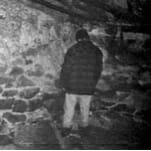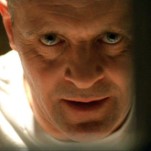Take Five: Underground Budapest

As one of the largest cities in central Europe, there’s a lot to cover. Hungary’s capital city is known for its stunning architecture, thermal baths, and historical bridges that connect the Buda and Pest sections of the city. While all of these sights are definitely worth a visit, it’s what lies beneath the bustling streets of Budapest that offers a surprising array of unique attractions. From ancient underground cave systems to a museum that pays tribute to the city’s tumultuous past, here are five fascinating underground sites to explore in Budapest.
1. Labyrinth in the Castle District
Located in the Castle District just west of the Danube River, you’ll find the medieval Buda Castle, initially constructed in the 13th century and expanded upon by successive waves of kings.
Beneath the castle, you’ll find the =”>Labyrinth. A part of Hungary’s sprawling cave system, these ancient winding tunnels once served as hunting grounds and even a place of refuge for prehistoric peoples. As the castle above this cave was built, the tunnels were filled in and connected to form a labyrinth. Through the years, the rooms of the labyrinth were used for a variety of purposes from wine cellars to prison chambers. Perhaps its most well-known prisoner was Vlad Tepes, otherwise known as Vlad Dracula, who was held here in the 15th century. There is even a special exhibition dedicated to his chamber. Visitors to the Labyrinth can explore the various exhibits or take guided tours, and brave ones can take the eerie nighttime tour.
2. House of Terror Museum

Photo by Ruiwen Chua CC BY-NC-ND
In 1945, the Soviet Army liberated Hungary from Nazi Germany, marking the start of four decades of Communist rule. During this time, the new regime took over a building on Andrassy street previously used by the Nazis. The basement of this building was used as a prison, and it was here that thousands endured gruesome interrogations, torture, and even executions. In 2000, The Public Foundation for the Research of Central and East European History and Society purchased the building. Over the next two years, it underwent renovations and restorations to be reopened as a museum. The aptly named House of Terror Museum serves as a memorial to the victims who suffered and died here, and shines a light on what life was like in Budapest during this time. The extensive underground section of the museum features exhibition halls (pictured at top) as well as the actual cells where prisoners were held (pictured above).
3. Underground Railway Museum
Budapest is home to the oldest continental underground subway line in Europe, and the second oldest line in the world. It was originally built to avoid construction of a tram route on the picturesque surface of Andrassy street. After almost two years of construction, the Millennium Underground was completed in 1896. Its inaugural line was called Metro Line 1, and it is still in operation today.
Fittingly located in Deák Ferenc Tér, a square where several subway lines intersect, the =”>Underground Railway Museum is dedicated to the history of the Millennium Underground. Here you will find the original royal carriage used by Emperor Franz Joseph during its opening ceremonies, as well as photo exhibits that detail the subway’s history. During Budapest’s annual Night of the Museums, when museums keep their doors open into the early morning hours, you can even check out the original 19th century streetcars.
4. Szeml?hegyi Cave
-

-

-

-

-

-

-

-

-

-

-

-

-

-

-

-

-

-

-

-

-

-

-

-

-

-

-

-

-

-

-

-

-

-

-

-

-

-

-

-










































